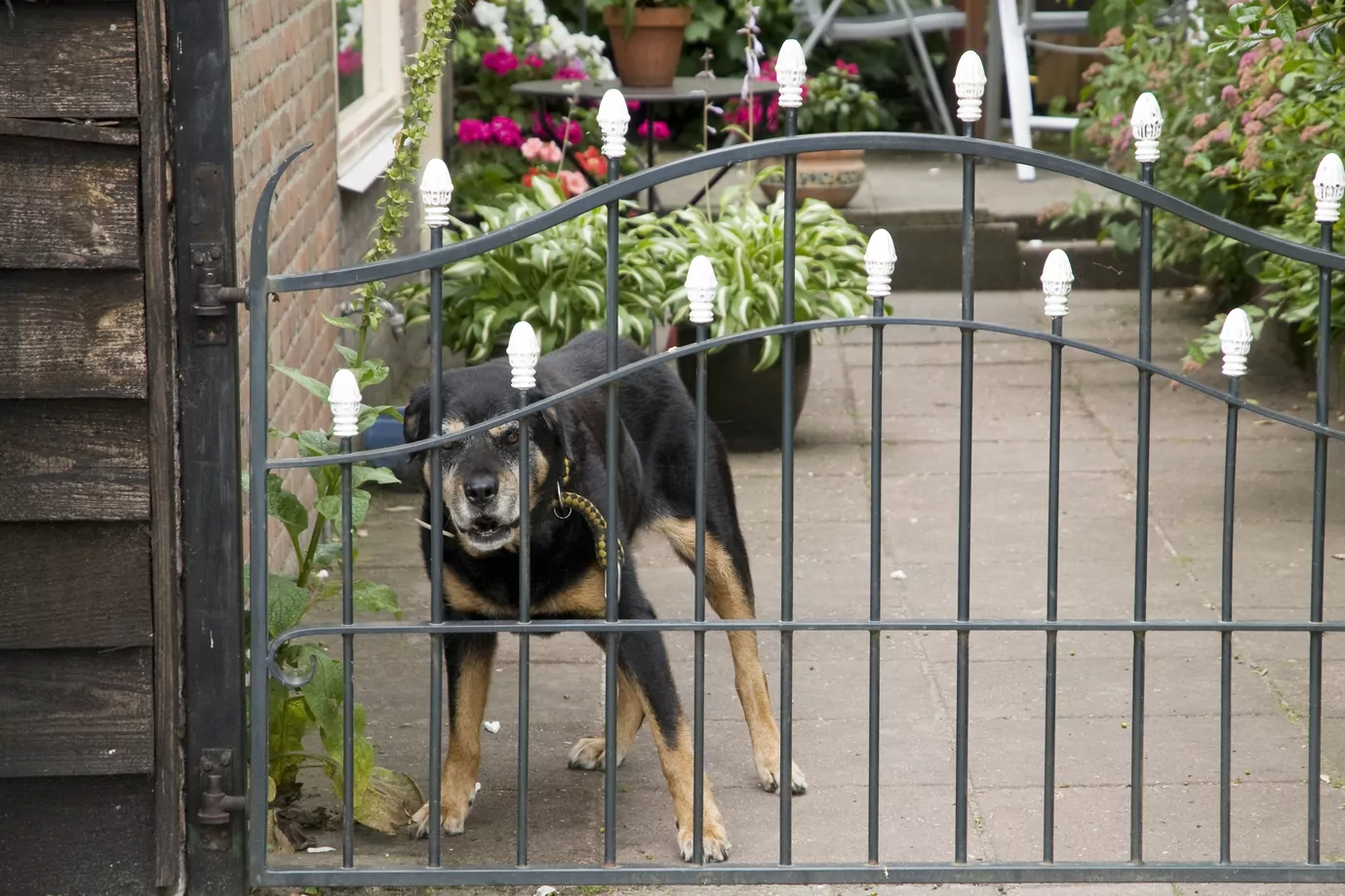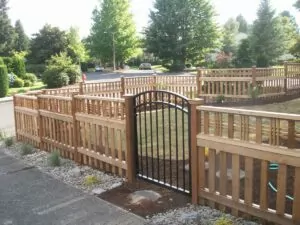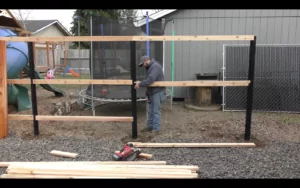
Dog fence aggression is no joke. It can lead to a lot of trouble, especially if your bold canine protector were to somehow escape its confines and attack someone who may have just been innocently walking past the property.
Another scenario: Two dogs are trying to get at each other from opposite sides of the fence. They’re also barking, causing a ruckus, trying to reach the other dog by pushing snouts through the fence slats or frantically digging at the ground beneath the fence.
Whether the dog is barking and trying to attack a person or a fellow dog, it goes without saying that a better barrier — i.e., a more effective dog fence — can help prevent things from really getting out of hand.
If you’re trying to find ways to curb dig fence aggression, then Pacific Fence & Wire can help. We’ve been in the fencing business for almost 100 years. When it comes to fencing boundaries, our knowledge, problem-solving and solution-finding skills, and expertise are, well, boundless!
Get in touch with us today with any questions.
Fences and Dog Aggression
Take a look at these photos. That’s a lot of dogs making a lot of noise and displaying aggressive and threatening behavior. The good news is that dog behavior can be modified. Even old dogs can learn new tricks, despite the old saying.
Training your dog requires skill, patience, and, often, a professional. Basic obedience training, especially with young pups, should be enough to curb problem behavior, such as unwanted or unnecessary territorial aggression with neighboring dogs. Running the fence along fence lines can be annoying if the dog barks excessively; it will also wreak havoc on your lawn as your dog plays hide and seek with whatever’s caught his attention on the other side.
If you or someone you know has a dog that acts like this from the other side of the fence, then it may be time to reconsider your fencing. After all, a barking dog is more than just a nuisance. In most localities, it can get you fined; in other places, it can lead to a criminal offense.
In Oregon, for example, a dog “is a public nuisance if it disturbs any person by frequent or prolonged noises.”
Even otherwise well-behaved pooches can become more aggressive when they’re behind the protective safety of a fence. Check out this video; these dogs are snarling, barking savages — until the gate is opened. Then they’re all like — who me? That wasn’t me! I’m not even there!
All kidding aside though, this can become a big problem. So what’s the solution for dog fence aggression? A better fence, of course. (Or a better dog — but that’s not really up to us.)
A quick note of clarification: Not all barks are aggressive or territorial. As the ASPCA reminds us, “If your dog barks at people or dogs he sees through the fence, and his barking is accompanied by whining, tail wagging and other signs of friendliness, your dog is probably barking to say hello. He most likely barks the same way when family members come home.”
What we’re discussing here are barks that can lead to aggression or nuisance complaints. These dogs need better fencing stat!
Better Fences, Less Fence Fighting
If you’ve tried behavioral modifications — i.e., training — and that hasn’t stopped your pooch from bounding from the porch and darting for the fence, consider the following:
- Install a fence (or modify an existing one) that blocks the dog’s visual access to what’s on the other side (i.e., a visual barrier)
- Add an additional barrier between the current fence and the outside world (i.e., a buffer zone)
- Replace your chain link fence with a wooden or vinyl fence
- Keep your dog inside
We can help with the first three things on that list. Give Pacific Fence & Wire a call today, and we’ll work together to find a dog fence aggression solution that works for you and your canine pal.





